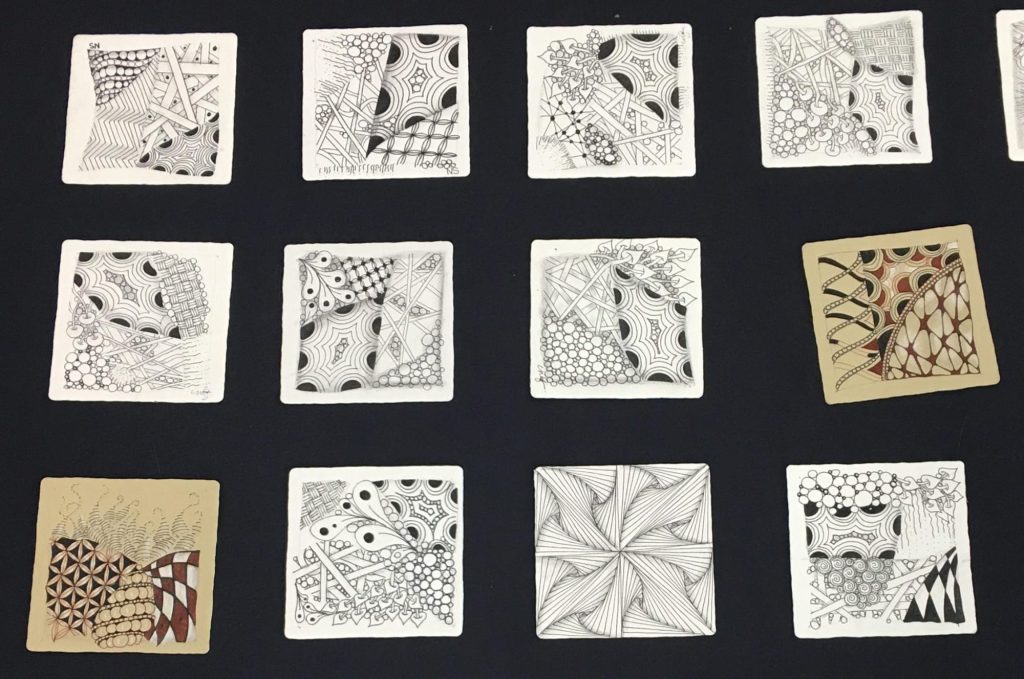Here’s a quiz to introduce the magic of Zentangle.
Zentangle is a) a slow meditative form of wrestling; b) a form of eroticism; c) a Gordian knot of spiritual movements; d) an artform allowing everyone and anyone to become an artist with minimal guidance and on their own terms and speed.
The answer, of course, is d.
Recently at the Florence Sylvester Senior Center in Laguna Hills, Nicole Steiman, a self-described “creativity coach,” introduced a curious audience of 18 participants to Zentangle.
It is a line-driven form of drawing, mostly black and white, and composed of geometric or flowing shapes.
For supplies, Zentangle requires little: small squares of thin, lightly textured cardboard called “tiles.” For drawing, a pencil and black Sharpie-type pens, one very fine and another a tad thicker. No erasers—ever.
“There is no such thing as a ‘mistake.’ Something that you think might not work at first, may very well later,” said Steiman, a Certified Zentangle Teacher, or CZT.
And while there’s no scientific evidence, practitioners say creating Zentangles induces calmness and relaxation, along with emotional self-satisfaction after finishing a project.
“You can Zentangle anywhere – at the doctor’s or dentist’s office, anywhere where you’d otherwise find outdated magazines and boring TV programs,” Steiman said.
To help students get started, Steiman distributed Zentangle warmup sheets illustrating basic shapes.
Then, standing before a whiteboard, she instructed the students to divide their small pieces of paper into random spaces – some larger, some smaller, some defined by wavy flowing lines, others more conventionally shaped like ovals and squares.
Steiman demonstrated drawing round orbs, a basic Zentangle shape, but stressed that she was only a guide in a process. Students were to engage with their own creative juices.
Hence, imagine a larger oval space filled with smaller orbs – some are filled completely with black ink,…
Read the full article here







